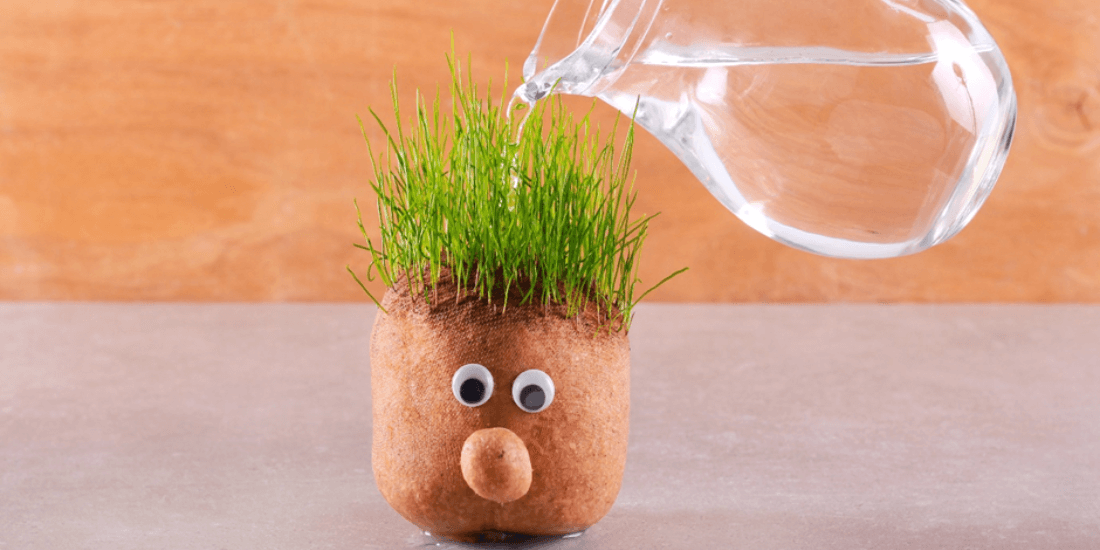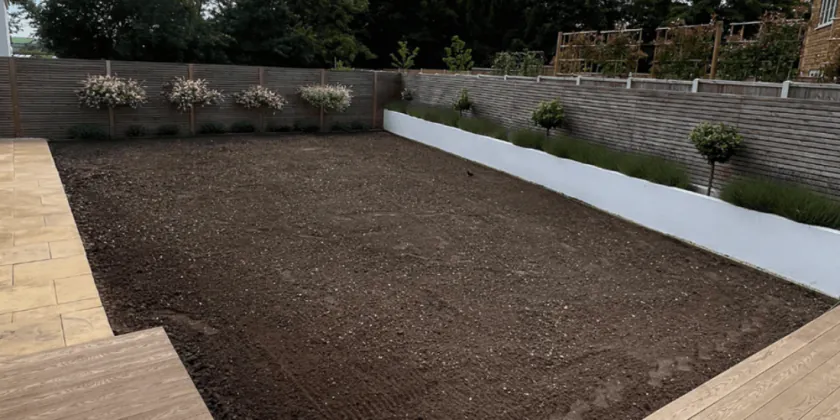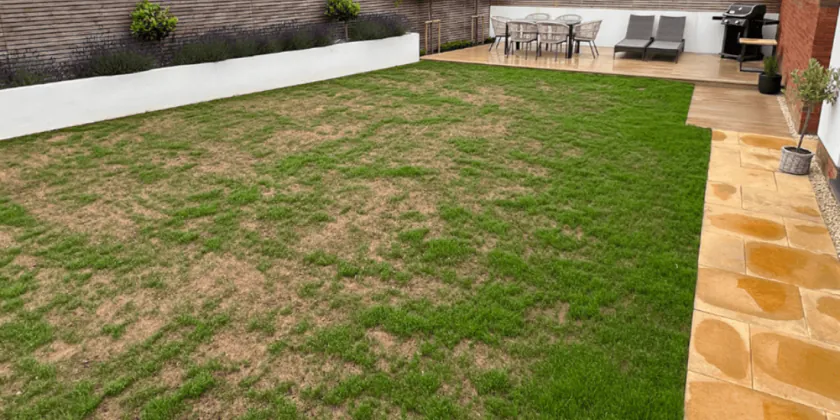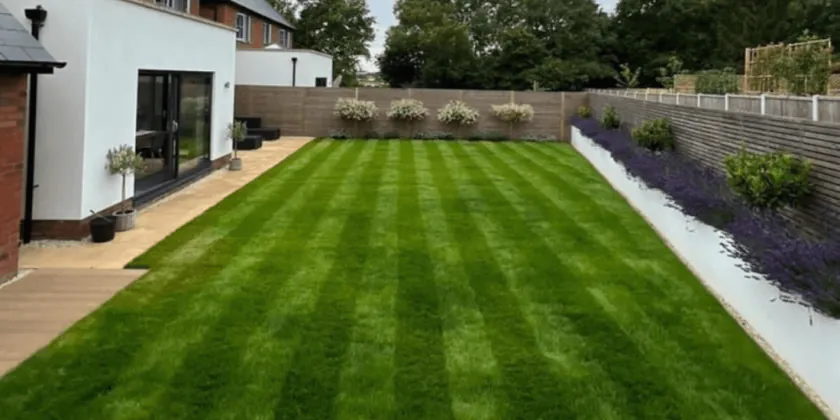5 Tips on how to make grass grow

Before growing grass
1. Pick the right seeds to make grass grow
Picking the best grass seed can set how your lawn will grow up for success or failure, so you must choose the right one! Careful consideration went into creating our grass seed mixes to ensure we had an answer to every soil type. When you are dealing with a shady lawn or heavy clay or sandy soils, store-bought seeds just will not cut it – so let’s see how our seeds can help you.
The grass seed that will make your grass grow - at a glance:
Seeds that grow on lawns with no special requirements
SUPERSTAR: Back Lawn – For everyday lawns that are hardwearing without compromising on looks.
FAMILY: Kids and Pets – For family lawns that take a real battering with all the fun kids and pets throw at it.
STATEMENT: Front Lawn – For ornamental lawns with a picture-perfect finish.
RESTORE: Self-Repair Lawn – For tired lawns that look worse for wear and cuts out the need for regular overseeding.
Seeds that love to grow in the shade
STEADFAST: Shade – For shady lawns suffering from shadows caused by trees or fences.
STEADFAST: Ultra Shade – A specialist mix solving your lawn’s problem of permanent shade.
Seeds that love to grow in harsh soil conditions
THRIVE: Sandy Soils – For lawn lovers plagued by sandy soils.
IMPRESS: Clay Master Lawn Seed – To help lawns master their clay soil conditions.
If you are still unsure of what grass seed suits your lawn best, find out – what grass seed you need!
2. Prepare the perfect seedbed to grow your lawn
Part and parcel of helping grass seeds grow involves giving them the proper conditions for growth. So, preparing the perfect seedbed goes a long way!
Removing weeds and moss
First, ensure your seedbed is free of weeds and moss, which will help keep your lawn growing healthier in the long run. When you are only trying to tackle a few weeds on your lawn, these can be removed by hand – make sure you remove the roots! If you are dealing with a more problematic weed dilemma, try using our Feed, Weed & Mosskiller fertiliser, allowing you to get back to helping your grass grow!
Level seedbed
A level seedbed is a happy seedbed – it also helps your grass grow! Having a level seedbed ensures your grass seed grows evenly and helps from patches appearing on your lawn caused by any lumps and bumps that make the soil uneven. To level a seedbed, use a rake to break up the ground and even everything out. If you find your soil is too clumpy to rake, use a rotavator to churn up the soil and leave it in a perfect position to be raked over.
You will know you are ready to move on to sowing your seeds and getting your grass growing once your soil is fine and crumbly!
Tips for good seed sowing
When sowing your grass seeds, there are a couple of things you can keep an eye on to help your grass grow! For sowing a new lawn, we recommend sowing the seed at 50g per m2, and for overseeding an existing lawn, sowing at 35g per m2 – you don’t want your seeds spread too close or far apart as this will cause patchiness. You also want your seeds to be in amongst the soil when sowing, a good rule to follow is for the soil depth to be around the thickness of three £1 coins stacked on top of each other.
What grass growth to expect at this stage
Following all the tips to help your grass grow before sowing your seeds, you should be left with a bare lawn ready to welcome your new grass seed.

During grass growth
3. Water your seeds the right way
All grass needs water to germinate, but you might be surprised that when it comes to watering newly planted grass seed, it needs to be watered every day for the first 6 weeks to grow properly. Having constant access to moisture will make sure your grass seeds grow faster, thanks to having the proper environment for growth. When your grass becomes fully established, you should use more water, less often to help encourage good root development. A rule of 1 inch of water per all areas is a good starting point.
What grass growth to expect at this stage
If you find your lawn looking patchy – don’t panic, this is normal! All lawns start off as patchy depending on the availability of light, moisture and heat but will all fill out around the 6-8 week mark.

After growing grass
4. Mow your lawn the proper way
Baby grass plants are vulnerable, and you should wait until your grass has reached a height of 7cm before its first mow. If you cut your grass too short, it can weaken it – only removing a third of your mowers blade height each cut will keep your grass growing strong and healthy! Find out how and when to cut grass in our video guide below.
5. Fertilise your lawn to boost growth
Using the right fertiliser mix
Fertiliser will keep your lawn looking fresh while encouraging strong, dense grass growth! Not only does it boost the growth of your grass, but it will also recover any wear and tear on your lawn. All our fertiliser mixes are made up of nitrogen, potassium, and phosphorus – the level of these differ from one another. In summer, you should aim to feed your lawn with a fertiliser that is high in nitrogen to keep your grass green and lush. In winter, your goal is to protect your lawn from winter-borne diseases and frost, so you should fertilise it with a feed that is higher in potassium and phosphorus to help strengthen the roots and harden the grass blades.
Fertilising your lawn at the right time
Ideally, you should be fertilising your lawn twice a year, and the best times are in spring and autumn using a Slow Release fertiliser – promoting the growth of healthy green grass across 16 weeks. In between these times you can fertilise your lawn with a quick release fertiliser, such as our QUICK RELEASE: Spring / Summer, or QUICK RELEASE: Autumn / Winter.
What grass growth to expect at this stage
After our 5 tips, you should be left with a lawn that looks like this! (Stripes are an optional extra)
